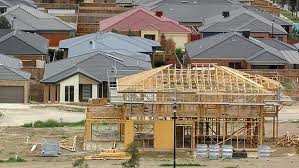Housing shortage, what housing shortage?
Posted by Andrew on Dec 22, 2011 in Economics and Finance | 0 comments
Another year another report on housing shortages (heck another day another report). This week the Housing Shortage National Housing Supply Council released their State of Supply Report.
And, unlike many other ‘reports’ this one is made by some pretty smart (and objective observers). Not to suggest that the many press releases and associated findings from various
industry bodies aren’t correct – but there is a degree of scepticism when reading a report claiming the need to build more houses from an organisation whose job it is to represent the cause of building more hou
Amongst the report’s key findings are:
- Despite weaker market conditions, the housing shortage continues to widen. (This sounds counter to every economic principle known to man – but we’ll get back to this)
- Underlying demand for housing grew by 159,200
- Net additional housing supply up by 131,000 dwellings
- The gap between these measures of underlying demand and supply increased by
- 28,200 to 186,800 over 2009-10
- The largest housing shortfalls in numerical terms are in NSW and Queensland, with shortfalls of 73,700 and 61,900 respectively. (Hmm, the state that forms the first port of call for migrants, and the other state in the resource boom. Didn’t see that coming)
- Data from the states and from the Council’s analysis of recent building approvals data suggest that supply is likely to fall short of the medium-growth projections (meaning a larger gap) in the short term.
- Projections, based on trend building rates and household growth, suggest that this gap could increase to over 640,000 over the next 20 years
- This growing gap indicates that housing production needs to lift well above trend to reduce the likelihood that housing shortages and poor affordability impact adversely on economic growth and standards of living.
- Infrastructure development (It is much easier and less controversial to build a road in the middle of nowhere than on main street)
- Angelina Jolie: OK I cheated. If I had said Planning Policy Reform you would have skipped ahead wouldn’t you? Doesn’t mean its not important.
- Market distortion. No, not he endless parade of new home buyer incentives. Inefficient state government duties. Stamp duty doesn’t count as a deposit. Remember 5.7 years NSW?
So in summary, well a wise man once said that a problem well stated is a problem half solved. We should be grateful that the problem has been identified, maybe the next step is identifying some solutions?





Recent Comments